|
|
Post by wildfire2099 on Oct 6, 2017 13:10:36 GMT -5
You might be right, though I can't say I feel much nostalgia for that period (despite starting to buy comics right about that time), I'm sure people do.. with nostalgia it's often the experiences around the thing (finding a hard to find issue, shoping with a parent, etc) that is REALLY what appeals more than the story/item itself.
|
|
|
|
Post by codystarbuck on Oct 6, 2017 17:48:57 GMT -5
Like anything, the 90s can't exactly be broken down into "this happened over 10 years" A lot of what occurred began in the late 80s (catering more and more to speculators, crossovers, over-hyped projects, business acquisitions, etc...) and much of what occurred at the end spilled over into the early 00s. It's the same as when people would slag off 80s music as nothing but one-hit wonders, ignoring the multiple hit artists and that a lot of the foundation was laid at the end of the 70s and that things like grunge and indie rock were happening in the later 80s, spilling over into the 90s. Same here.
The beginning of the 90s sees a lot of crossovers, in the wake of the success of Crisis and Secret Wars. They milk that until the cow runs dry, then they beat the cow into the ground. More independents arose at the start; but, a lot of those that came in the 80s had their financial woes catch up to them. Most of the 80s indies were gone within the first few years of the 90s; certainly by the mid-90s. New companies started up, but turnover seemed to go much faster. The 80s indies seemed to go more for the alternative (though to varying degrees), while more 90s indies seem to want to ape DC and Marvel, with exceptions here and there. What really changed the dynamic was the Distribution Wars. The fallout of the speculator boom was bad enough; but, when Marvel went with Heroes World and forced stores to open new accounts, it killed a lot of cash flow. DC made it worse by going with Diamond. If your shop had been ordering from Capital City, it suddenly needed 3 accounts to feed demand, if it didn't outright dump CC. Capital had been far more friendly to the indies and self-publishers and many of them suffered greatly.
From a content standpoint, it was probably no worse than any other decade, particularly if you factor in things like the expansion of manga translations. A lot depends on your age in the 90s and your tastes. Part of the reason my interest in superheroes waned in the 90s was a feeling of "been there, read that," that occurred more and more. Neither company was breaking much new ground. DC shaped up better, for me, because of Vertigo offering alternatives to superheroes. Marvel pretty much stuck with spandex bread and butter. Dark Horse and Malibu (plus others) tried jumping on the bandwagon, with mostly derivative stuff, following Image, with derivative being extremely kind, in their case (outright rip-off being far truer, for many titles and characters). I found my tastes in those areas drawn by more original takes on that kind of thing or just more in tune with the archetypes that had stood since the Golden Age. Astro City had derivative characters; but, it treated them differently. The stories weren't so much about battles with villains or epic calamities; they were more about individuals who happened to be heroes, villains, or just bystanders. Alan Moore went back to the source, both in Supreme and in his own ABC books (carrying over into the 00s). he gave us a hero who is part Tarzan/part Doc Savage, a team of Victorian adventurers, a mythic heroine, and a group of cops in tights (plus the quirky pastiches in Tomorrow Stories). Hellboy mixed Kirby monster fighting with Lovecraftian horror and some good old pulp/superhero adventure. Monkeyman and O'brien had a nice mix of Silver Age sci-fi adventure and humor, while Grendel Tales took the Fantomas-style villainous horror and mixed in samurai stories, parables of the violence in Yugoslavia, family, and the continued look at the destructive force of aggression. Self-publishers grew in numbers by the 90s; but, the economics shut many down, or forced them into other alternatives.
So, not a horrible decade; but, the business was changed in a very negative way, which colors a lot. A lot of the progress of the 80s was stifled, for much of the 90s, before things settled down and new avenues opened up. Those alternate avenues proved to be more beneficial to those people; but not necessarily to the traditional comics market.
|
|
|
|
Post by codystarbuck on Oct 11, 2017 21:40:15 GMT -5
Starman Zero Issue  Our story opens at night, in Opal City. It's a gleaming metropolis of art deco skyscrapers. The new Starman looks out over the city and smiles. He has had a good night, foiled a drug deal and a mugging. He feels powerful, content. He is Starman, the one and only....  Flash back to earlier, times past; Starman is arguing with someone. We see David Knight, the new Starman telling younger brother Jack he can't have his Big Little Books. Their father, Ted Knight is working on something and finds his concentration interrupted by the petty sibling rivalry. He chastises Jack for bothering his brother with these petty concerns, when he has a hero's work to do. Jack fires back, mocking his brother and his father's legacy. 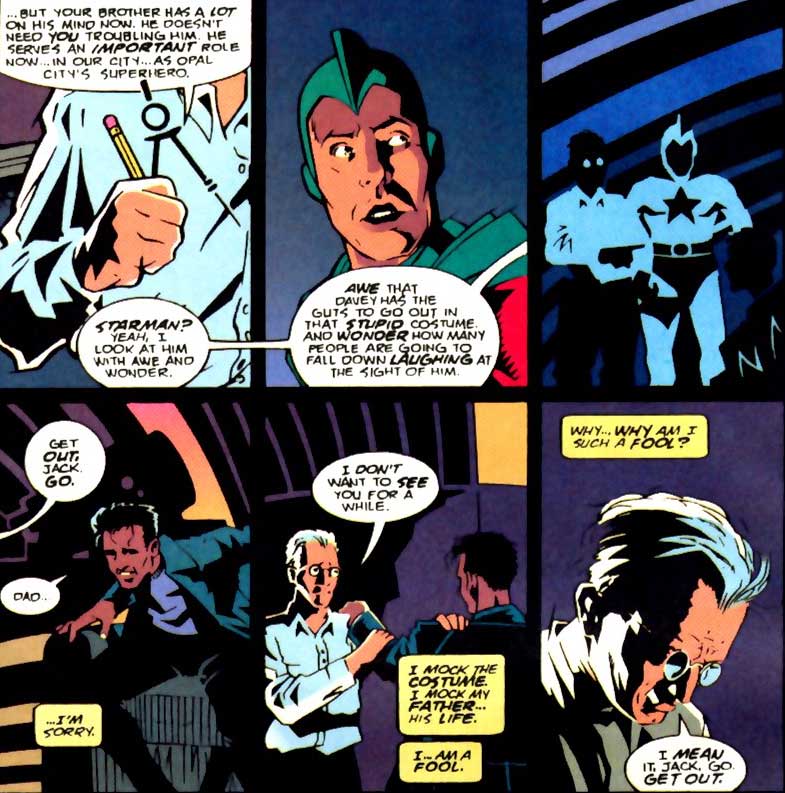 Jack knows he has offended his father and tries to reel it back, to smooth things with his father, wish his brother luck; but, he has gone. Jack moves on to his own work, buying, selling and trading collectibles and antiques. Jack returns to his shop and a few hours later he gets a call. It's his father; David is dead, shot by a sniper. He asks about papers and effects that Ted left with Jack. Inside is a Cosmic Rod, Ted's weapon, as well as Sylvester Pemberton's Cosmic Converter belt, which he used when he was with the JSA and Infinity, Inc (as the Star-Spangled Kid and Skyman). Jack is confused. He wants to help his father, but he wants to go down to the morgue alone. Ted goes out to his car, his hands shaking, when his observatory explodes and we see a woman's face in the fire light. A man comes into Jack's shop wearing sunglasses, asking about jade and bakelite and weapons. Jack realizes something is wrong and the man tells him he is the one who shot David and he produces a weapon, a pistol with a flamethrower hookup. He tries to kill Jack; but, he fights, survival instinct kicking in. The man shoots him in the leg as Jack tries to reach his father's box. The man kicks him and steals the Cosmic Converter belt. He tosses a grenade, for good measure. Jack fumbles, finds the Cosmic Rod... 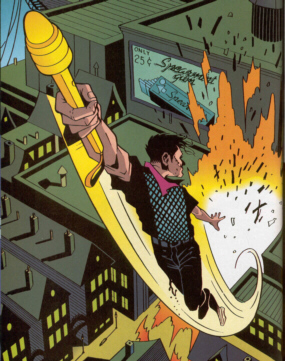 We see the man and woman together. The man is Kyle, the woman is Nash. She says Ted Knight still lives and the unseen person is happy. Kyle says Jack is dead, and he is happier. We then see the man...  He is the Mist, Starman's deadliest enemy. Kyle and Nash are his children. He is pleased with them. We end with Jack, bloodied and battered, stumbling through back alley streets. Ted is in a hospital, unconscious. David is dead, Jack is hurt and on the run from some unknown enemy. This is how we meet the hero of our story. This was a tremendous debut! From the start, James Robinson gives us the legacy of Starman and the perfect setting, an old city that looks at the future that never was. He reminds us of the last Starman, Will Payton, and that he is dead. He gives us the new Starman, then promptly kills him. We meet Jack Knight, and he is a disappointment. He mocks his father's legacy, he wants his brother's things to make a fast buck. Quite frankly, he's more than a bit of an a-hole. Even Ted has to tell him to leave. But, Jack isn't a complete jerk. He realizes he has hurt his father and his brother. He tries to make amends, but David is gone and he will never have the chance to say he is sorry. Before he can make amends with his father, his father tells him his brother is dead and someone may come for him. Then he is attacked. Jack meets the killer and barely survives, mostly by getting extremely lucky. Still, his first instinct was to fight. We also meet Tony Harris' art. It's still a bit raw here; but, there is a power in it and a diversity. He captures the look of this backward/forward-looking city, while dressing his hero in hipster clothing. He gives Nash and Kyle a unique look, without s swatch of spandex. He captures expression well. He will get better. This series served notice with this first issue; this isn't your father's superhero. This is a new hero, for a new time. He is a deeply flawed one, but complex; and, we are left to wonder how he will rise up?Kyle cleaned his clock easily, yet, he survived. Robinson crafts it like a great mystery, giving us the murder, then backtracking to events that lead up to it, introducing the characters, setting the story in motion. By golly, we will be back to see what happens next. Starman debuted with Zero Hour and is about the only good thing to come out of it. It isn't directly tied to it, which is good. Robinson breaks from the formulaic morass that was plaguing much of the superhero genre. he does it by both going back to the source and taking a step into the modern world. Jack Knight straddles both. he is far from likeable, far from heroic, yet he is the one who survives. He survives because of the family legacy but also because of his own skills. He is someone to watch, to not underestimate. Jack is immediately accessible to the reader; he is a collector, like us. He has a personality, though not always a pleasant one He has a hero's name. Stick around; this only gets better. |
|
|
|
Post by codystarbuck on Oct 14, 2017 20:05:52 GMT -5
Starman #1  Our story opens with a shadowy, shadowy gentleman writing in his journal, summarizing what has happened. 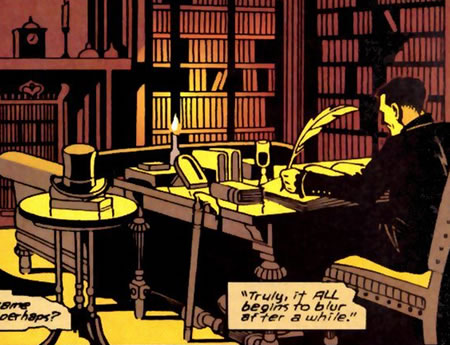 The City's champion is dead, crime is running wild, as we see violent bank robberies, including those run by Kyle, the Mist's son, murder of Starman. The shadowy, shadowy gentleman speaks of his own crime, but this is his home, his city. He seems to come to a decision and goes out to take the night air.  Jack Knight is alive and he stumbles into the hospital. After being patched up and answering some questions, he sees his father. Ted Knight, the original Starman is alive, but angry and bitter. he chastises Jack and takes out his anger and grief on his surviving son, the one that sneered at his legacy. He tells Jack to leave. Jack then meets the O'Dares, Irish cops who have been in Opal City since the police force began. They owe a debt to Ted Knight. They are there to watch out for him. Jack runs into Hope O'Dare, who explains the family connection, as their father's life was saved by Ted Knight and he and his children swore to be there if Ted needed them. Hope basically hits Jack with some hard truths, while trying to reassure him that his father didn't mean the harsh things he said. However, Jack is a real pain in the tuchus and maybe some of what Ted said is the truth, making Jack look inside. 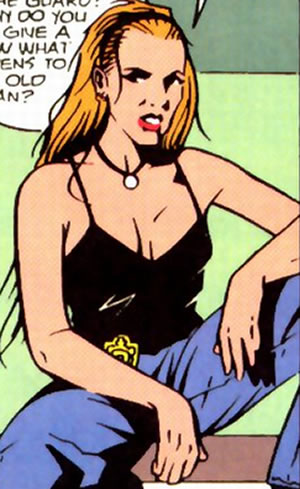 The Mist's men are terrorizing the city, small robberies distracting from bigger ones. The body count sounds like Vietnam. ted Knight receives a call from the Mist, gloating. he says he has taken Ted's two sons, his home , his laboratory and his science. he will take everything before it is done and Ted will be happy to die, as he will have nothing left. He threatens to take his wife's memory. Jack asks what they should do. Ted says it is an empty boast; his wife dead and cremated, ashes spread. There is nothing for the Mist to take. he tells Jack to get out of the city, that he can't bear to lose another son, that the Mist thinks he is dead and won't be looking for him. Jack goes, but here's that criminals are looting the Adelle Knight wing of the Opal City Museum. Jack's mother's memory; he gift to the city. Jack knows he should leave, he is not a hero; just a junk dealer. He's self-centered and abrasive. he isn't the type to put on colorful tights and dance with bad men. He should go. 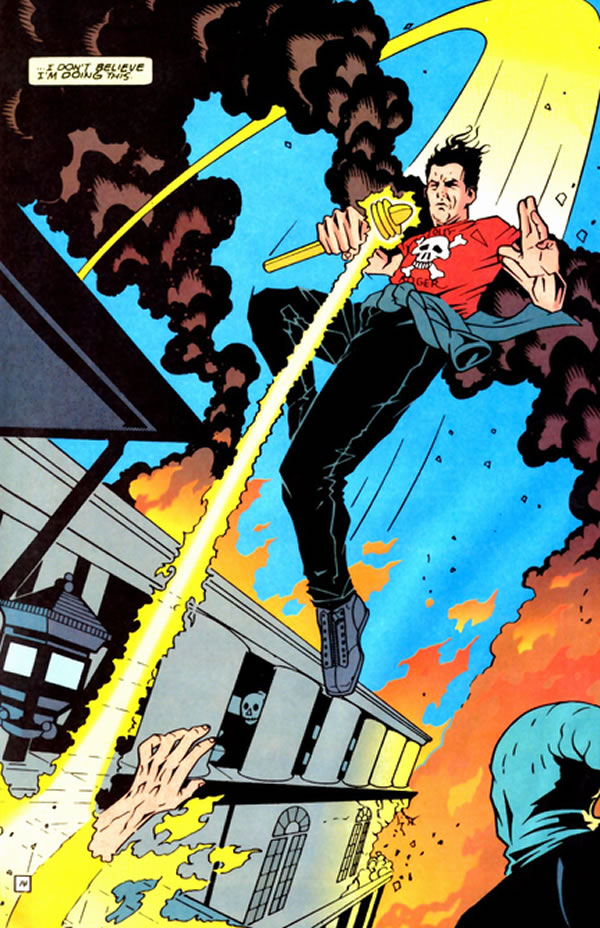 He stays and takes the fight to the Mist's men. People notice and their spirits are raised. The shadowy, shadowy gentleman is there. He knows it isn't David, it is Jack, the younger one. Jack fights desperately, keeping on the move, using his martial arts training and the gravity rod his father had left at his place. Kyle comes on the scene and blasts at Jack and he takes to the skies, appears to be hit and plunges into the river. 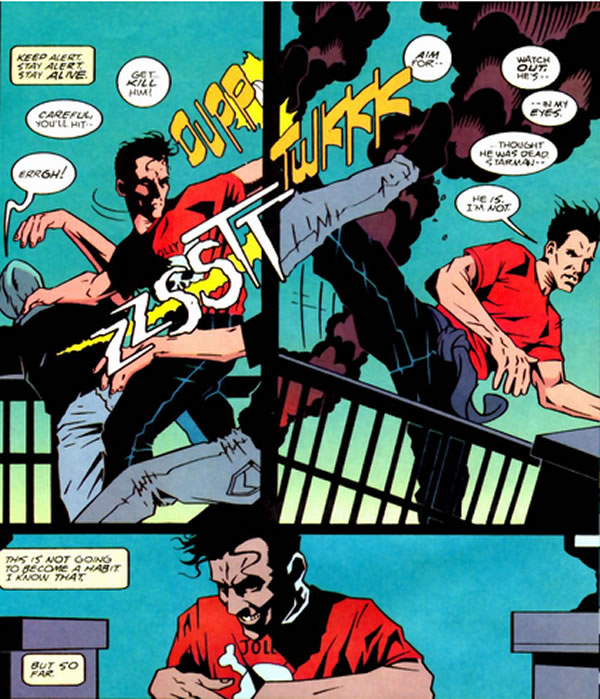 Back inside the museum, the shadowy, shadowy gentleman introduces himself to some of the Mist's men. Normally, he would help himself to trinkets; but, he is angered that his peace has been disturbed, that these men are desecrating art. He is torn, until one of the men makes up his mind, by trying to kill him. The shadowy, shadowy man unleashes a shadow creature; but it is no mere illusion. It devours one of the men and the other is on the floor terrified. The gentleman, The Shade tells him he makes terror manifest and the man is lucky he reacted as he did or he, too, would be devoured. he wonders about the apparently dead Jack, if he could have been the champion the city has needed since the death of the Native American lawman. He wonders, as he leaves. We see Jack emerge from the river.He has lost the gravity rod. he thinks his father was right; he is no hero. he should leave. he starts to; but, he turns back and sees the city ablaze and he decides to go back. Robinson introduces to more of our cast. We meet the O'Dares, including Matt (who is not named, at this point, and Hope. They are tough cops, loyal to Ted Knight and Opal. They will be back-up for Starman. Hope especially makes a splash, as she takes Jack down a few pegs, but offers him kindness, to know that his father is grieving and lashing out in anger, that he will regret the angry things he said to Jack. However, the big introduction is the Shade. The Shade is an old Jay Garrick Flash enemy, who used a cane to cast shadow fields, while committing crimes. In the 1940s, he looked like this... 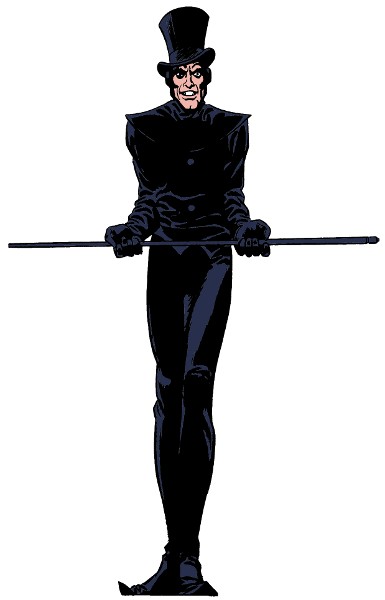 Robinson and Harris give him a make-over. Now, he looks more like this...  He looks like a Victorian (or Edwardian) gentleman, the kind who would have been at home in Whitechappel. There is a menacing air about him, though one of refinement, as he writes with a quill pen in his journal, in his library, sipping absinthe. This is not a gimmick villain; this is someone more sinister. When we learn it is the Shade, we are stunned (those of us who knew him). This was a gimmick criminal who plagued both Jay Garrick and Barry Allen; he was part of the Injustice Society, alongside the likes of The Fiddler, Per Degaton and Brainwave. But, he is siding with the heroes. What's up? Jack is barely surviving. he was nearly killed once. His father seems to hate him, he wallows in self pity, he ticks off everyone he encounters. Hope knocks him down a bit and it stings, as he recognizes the truth in it. He looks to his father for guidance, but his father wants him gone. Jack looks to leave; but, he stays, despite his best judgement. The Mist's men are attacking his mother's legacy and we sense that he is POd. In future issues, we will see why that resonates so much more. Even so, the Mist has attacked his family. Jack has been shocked into growing up. He fights and he fights hard, and he does well, for someone with no training or inclination. Then, Kyle shows up and gets the better of him, again. Still, jack survives. Kyle can't seem to get the job done. Jack heeds his father's advice and starts heading out, then turns back to see the city in flames. He comes back. One of the things I truly loved about this series is Jack's journey from self-centered a-hole into true hero. Jack ran from the family legacy for most of his life; but, we will learn there is more to it. We will learn that there are great depths to Jack, that he is more than an obnoxious collectibles dealer. he is a fighter, he is a hero. He girds himself in nostalgia and cynicism; but, there is a joy to all of this, as he is coming to life. here, at the beginning, it is survival. Soon, it will be much more. The other element is The Shade. Robinson turned a one-dimensional gimmick villain into one of the most complex supporting characters in comics. This is a man who does heroic deeds, but delights in matching wits with a speedster. He loves art and fine living, and the thrill of a caper. However, not in Opal City. This is home and he loves it. We will learnmore of the Native American lawman and the Shade's history with him, and the rest of Opal. In fact, his history will stretch back farther than Jay Garrick and Ted Knight. This is a book with a lot going on. Robinson gets right what Knightfall didn't: the chaos orchestrated by a mastermind, that is tearing a city apart. This is a morality play, a wrestling match, and the heels have the babyface reeling, bouncing off the ropes and the canvas. However, the face is getting a few licks in, working towards staging his comeback. Robinson makes us feel like he will stage a comeback and we want to see it. The Shade is a wildcard; will he help the babyface or the heels? |
|
|
|
Post by wildfire2099 on Oct 14, 2017 20:42:52 GMT -5
The first arc certainly does grab you! I was pretty skeptical when I started it... I felt like maybe it was overhyped, but I was really sucked in right away... and I loved Shade and the O'Dare's at first sight.
|
|
|
|
Post by mikelmidnight on Oct 15, 2017 11:52:56 GMT -5
The other element is The Shade. Robinson turned a one-dimensional gimmick villain into one of the most complex supporting characters in comics. This is a man who does heroic deeds, but delights in matching wits with a speedster. He loves art and fine living, and the thrill of a caper. However, not in Opal City. This is home and he loves it. We will learnmore of the Native American lawman and the Shade's history with him, and the rest of Opal. In fact, his history will stretch back farther than Jay Garrick and Ted Knight. I know I'm a minority, but I hate this version of the Shade. I think Robinson's showing off his attempt to do a melodramatic gothic morally ambiguous character, and it always strikes me as being forced. Moreover, the Shade is a murderer (so far as the JSA is concerned), and I never once believed the Ted and Jay would just be willing to get over that and work with him. It also irks me that the two big bads outside of the Mist are both Flash villains. It makes me feel like Robinson was too lazy to actually research the characters Ted fought in his own career. |
|
|
|
Post by Slam_Bradley on Oct 15, 2017 12:58:44 GMT -5
The other element is The Shade. Robinson turned a one-dimensional gimmick villain into one of the most complex supporting characters in comics. This is a man who does heroic deeds, but delights in matching wits with a speedster. He loves art and fine living, and the thrill of a caper. However, not in Opal City. This is home and he loves it. We will learnmore of the Native American lawman and the Shade's history with him, and the rest of Opal. In fact, his history will stretch back farther than Jay Garrick and Ted Knight. I know I'm a minority, but I hate this version of the Shade. I think Robinson's showing off his attempt to do a melodramatic gothic morally ambiguous character, and it always strikes me as being forced. Moreover, the Shade is a murderer (so far as the JSA is concerned), and I never once believed the Ted and Jay would just be willing to get over that and work with him. It also irks me that the two big bads outside of the Mist are both Flash villains. It makes me feel like Robinson was too lazy to actually research the characters Ted fought in his own career. Who would you suggest he use? Because beyond The Mist, Ted Knight's rogues gallery is thinner than a comic book. |
|
|
|
Post by codystarbuck on Oct 15, 2017 18:41:45 GMT -5
The other element is The Shade. Robinson turned a one-dimensional gimmick villain into one of the most complex supporting characters in comics. This is a man who does heroic deeds, but delights in matching wits with a speedster. He loves art and fine living, and the thrill of a caper. However, not in Opal City. This is home and he loves it. We will learnmore of the Native American lawman and the Shade's history with him, and the rest of Opal. In fact, his history will stretch back farther than Jay Garrick and Ted Knight. I know I'm a minority, but I hate this version of the Shade. I think Robinson's showing off his attempt to do a melodramatic gothic morally ambiguous character, and it always strikes me as being forced. Moreover, the Shade is a murderer (so far as the JSA is concerned), and I never once believed the Ted and Jay would just be willing to get over that and work with him. It also irks me that the two big bads outside of the Mist are both Flash villains. It makes me feel like Robinson was too lazy to actually research the characters Ted fought in his own career. The Shade was up for grabs, as he hadn't been used, much, in some time. Much of his history was altered; so, Ted's acceptance is not so unbelievable. As we will see, Robinson was one of the few writers to really get into the heads of even minor villains, as he did with Copperhead, later on. Quite frankly, that ambiguity and more complex layering of personality appealed more to me than the previous Shade, and he really does a number with Ragdoll, though he kind of abandoned where he seemed to be heading with him, by the time Grand Guignol came around. The Shade had been in the Injustice Society, so he wasn't exclusively a Flash villain. Thing is, Robinson establishes that the Shade didn't operate in Opal City and Starman wasn't that active a member of the JSA (about 16 issues). Even so, he is wary of the Shade, at first. I understand your point and have similar feelings about certain other characters; but, Robinson, for me, made the character so much more interesting and is probably the reason the character was used in Jthe Justice League cartoon, when they introduced the Injustice Gang. |
|
|
|
Post by mikelmidnight on Oct 16, 2017 20:07:27 GMT -5
Who would you suggest he use? Because beyond The Mist, Ted Knight's rogues gallery is thinner than a comic book. I mean, he could have tried. Heck one of his villains was called Astra the Astrologer, and just from the name I think he could have done something interesting with him. And becvause they're so much more obscure, I would have cared a lot less if Robinson messed with them. |
|
|
|
Post by codystarbuck on Oct 16, 2017 21:50:15 GMT -5
Starman #2  Jack Knight is in his apartment, grabbing some clothes to protect himself, trying to tell himself he is only continuing the fight temporarily. he's no hero, he tells himself. He picks out a black leather jacket with an astrological emblem on the back, with a large central star. He figures the thick leather will provide protection and help keep him warm in the night skies. He's not sure the astrological emblem will please his father. For a man intent on not being Starman, Jack certainly seems concerned about what his father will think. He soon finds something that will please his father: a vintage Crackerjack prize sheriff's badge. It's a star in a circle and he knows Ted will like that. O, maybe, Jack likes the idea of being a lawman, of a sort. Jack ads some WW2 anti-flare goggles, which helps cut down on the affect of the light from the Cosmic Rod, should he get his hands on another one. It's just temporary, though. We see the Mist meet with the Shade. The Mist seems.....odd. He speaks of old times, times in which the Shade did not partner with him. His memory seems blurred. We cut back to Jack, who has been seen moving inside his apartment, by the Mist's men. They are waiting for him on the roof. Jack thought they'd watch from the street and he'd sneak away on the roof. Dumb, dumb; Ted wouldn't make that mistake, even David wouldn't, Jack says to himself. Jack fights hard, uses martial arts training from his youth, never thinking he'd ever use it in the future, to be a hero. During the fighting, Jack gets a whiff of seas salt, limes, and caraway seeds. We see the Mist's men on the roof, waiting for Jack, when they are struck down by a shadowy figure, with a heavy sword. Curious. We will learn more about this mysterious figure, later. Jack fights his way through; but, runs into Nash, the Mist's daughter. She has a pronounced stammer, as she has Jack at point blank range,a Glock 17 pointed at him. She speaks of fathers and hate, war an opera, saying they are footsoldiers, they do the killing and dying. Jack surprises her and asks why she, Nash, is doing this and Nash doesn't have an answer. She lifts her gun and tells Jack to go. Jack takes the gift and runs on and soon finds himself at a fortune teller's shop. 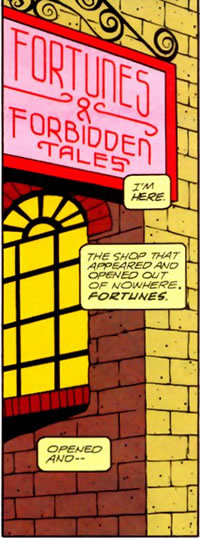 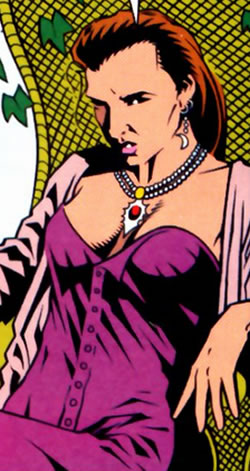 He goes inside and meets Charity. She tells fortunes and forbidden tales. They speak of the South and Robinson proceeds to insult much of it, while giving shout-outs to Faulkner and Salinger. Okay, so they were all rubes who chased their cousins (Robinson's words), according to Charity, yet they produced some fine literature. Uh-huh. No stereotypes there.... Anyhoo, before Jack leaves, Charity tells him that he will be Starman, into the future and will wield the Cosmic Rod well. He will go into space, a winged man will come to Opal, Jack will have a night at the circus, though some things aren't quite clear. Jack leaves and meets up with Ted, at the hospital. he tells him what happened and his father asked why he came back. Jack says the museum wing was his mother's gift to the city; he had to at least try, though he failed to stop the damage. ted says he tried and that is what's important. Jack says he isn't going to be Starman; but, he will continue the fight and asks where another Cosmic Rod might be. Ted chuckles at the question, since it seems odd for someone who isn't going to be Starman. He says they are all gone, then remembers a prototype, in a storage warehouse and gives Jack the address. He speaks of using and damaging a twin of it, in Washington, in 1950. Jack goes off and finds a treasure trove in the warehouse. All kinds of old thing: robots, harlequin heads, biplanes, and the Cosmic Rod.  Meanwhile, the Mist and the Shade make a deal; a percentage of the booty, as long as he helps spread fear and terror. We then see Ted in the hospital, asleep, thinking of Jack. We find out that he knew his son would be a hero at birth, as his mother held him and said he would be an artist. Ted saw his destiny and gave him a hero's name: Jack. We learn this was why he was so mad at Jack; David wasn't a hero and he was doing it because Jack wasn't. Ted's slumber is interrupted by the Shade, who disables the O'Dares, but leaves them alive. He whisks Ted away. Jack later receives a call from the Mist, telling him he has Ted. Jack makes a bargain, but warns that if Ted is hurt or killed that he will kill the Mist. The Mist sets up for a meeting between Kyle and Jack, as the story ends. Terrific chapter, as Robinson puts more pieces on the table. We get our first hint of a mysterious figure moving about Opal City. It protects Jack and he gets a whiff of the sea and limes. Whoever this person is, he has something to do with the sea, and citrus fruit. We meet Charity, who will come back on many occasions. The character, herself, was the host of DC's Forbidden Tales of Dark Mansion, a romance/horror anthology of the early 70s. It started as a romance title, then switched to "mystery" (Code-approved horror, since the word "horror" could not be used in comic titles). The book was a minor series; but, Robinson mines it for yet aother interesting figure. She gives Jack and us glances at his future. Jack will go into space ("To the Stars"), a winged man will come to Opal (though that changed to a different one than intended) and Jack will soon have his night at the circus, which will introduce another key figure, with a connection to 1970s DC. Robinson speaks of Ted and Washington, 1950 (the first week) and a staff-version of the Cosmic Rod. He is referring to his and Paul Smith's mini-series, The Golden Age, where we see the post-war JSA, as well as other golden age heroes, as Dan the Dyna-Mite is transformed into Dyna-Man, the hero for the Atomic Age, as part of a campaign, orchestrated by Tex Thompson, the Americommando (and former Mr. America). Ted is in a mental institution atthe beginning of the story, after a nervous breakdown. he is plagued by guilt for his involvement in the Manhattan Project and that the cosmic radiation he drew to Earth to harness (leading to the Cosmic Rod), in his words, led to people, good and evil, gaining superpowers, from methods that should not have worked but did. At the climax of the story, Ted returns to the fight and his Cosmic Rod turns the tide, though it is destroyed in the battle. Jack now has a twin of it, which makes for a rather phallic weapon (as Robinson comments, with an "Actress and Bishop" joke. The Shade seems to align with the Mist, though we see a reluctance there. His meeting with the Mist is puzzling, as the Mist seems less threatening. In fact, he appears to be senile. The Mist's daughter, Nash, lets Jack go, when he confronts her with the question of why she is taking part in this, personally. he touches something inside her. Robinson isn't done with that, yet, though. So, the fight moves to the climax. We see more of Jack moving into the role of hero, despite what he tells himself. He choses his armor wisely, thinking he is being cool; but, there is a method to his sartorial choices. he thinks he left martial arts behind, yet he wields those skills well. Ted knows what Jack won't admit; he was born to be a hero. He was born to be Starman. Robinson finishes with the first of the Shade's journal entries. He speaks of Oscar Wilde and Times Past. he speaks of killing a man who was abusing his own bear, killing it because it couldn't perform anymore and he was losing money. He speaks of the women who worked in match factories, whose exposure to phosphorus resulted in decaying bones, leaving them disfigured. The Shade admits to weeping at the sight of them, telling us that he has a heart and soul. He speaks of hearing about David Knight's death and thinks of the Starman of the 1950s, who served for one year and a week. We will learn more about him, after a few vague references; but we will wait until the final Times Past story. Robinson uses the Shade's Journal to fill in some of the past and even comment on the present, in a way. It was a fascinating element, as were the Times Past stories, which will be coming up. Robinson created a hero of the times, yet never lost sight of the past. That was one of the things that really drew me to the series and made it special, as was The Golden Age, Robinson has a real love for these old heroes and villains and a respect for what came before. Many writers would have retconned away the lesser stories and characters, especially the failed Starmen. Robinson embraces them and brings their past into the presen. Oh, he tweaks it a bit; but rarely in contradiction to their past stories. Motivations changed, events might have occurred differently, but were reported as seen in those comic stories. There was a Starman in 954, who wasn't Ted Knight, though Robinson changes him from who he really was (Batman, in disguise) Tony Harris' art continues to evolve and his action scenes are like no others. He spends a lot of time drawing conversations, thanks to Robinson's scripts; but, he stages them in interesting ways and his pages are complete designs, not just panels placed together. he adds elements from various art styles; but, especially from the Art Nouveau era, that of Mucha and Beardly. Later, we will see some Howard Pyle (a hint of our mysterious sword-wielding figure). Opal is a mixture of Art Deco and Art Nouveau, the stories mixing Chandler and Hammett with Fox and Finger. So, the preliminaries are over and we are about to enter the main event, with the next issue. |
|
|
|
Post by codystarbuck on Oct 17, 2017 21:18:38 GMT -5
Starman #3  First off, I need to mention the covers of Starman. These things were beautiful, from the get go. They really helped the series stand out and each one would make a fantastic poster or art print. Our story opens with the two fighters preparing for the big match. Hope O'Dare tells Jack she thinks what he is doing is heroic and, again, he blows it off. Meanwhile, Jack's thoughts are on the past and he starts recall childhood memories. he shows David a Viewmaster reel of the JSA, in the 1940s and David says some day he will be like his dad. Then, Jack remembers that he was the one who actually said those words. Nash talks to her brother, Kyle, afraid that he might be hurt. She doesn't stutter when she speaks to him and she asks what will happen if he is killed. She confesses that she let Jack go and now Kyle must face him, though Kyle dismisses him as a loser who studied martial arts after he got into Bruce Lee, but only for a short period of time, before something else came along. He gives his trademark sunglasses to his sister. The fighters head off the the ring; the night sky above Opal City. Jack and Kyle begin the fight and Kyle comes out strong, though Jack is able to take advantage of Kyle giving away his sunglasses. Jack's thoughts continue to be on the past, as we see David acting a bit of a bully. The O'Dares are waiting out the fight and Hope takes her family to task for not protecting Ted Knight. Just then, the Shade reappears. The men are about to draw when the Shade tells them he comes in peace and reminds them that he let them live, when he could have easily snuffed them. Hope asks what he wants. He says he wants peace in Opal City. He explains that he accepted the Mist's offer to get closer and learn his plans. he took Ted to ensure he was safe and that no one could hurt him, while using that to gain theM ist's trust, to learn everything. he then leads the O'Dares and the police to the Mist's lair, inside the Knight Family Mausoleum, in the Opal Creek Cemetery. While the police move in, Jack and Kyle are locked in vicious combat. Jack recalls more of David's bullying, then recalls moments of kindness, like a birthday present of concert tickets, sticking up for him when he was being picked on, riding in a go cart together and more. Kyle taunts Jack, that he is going to die, like the brother he didn't even like. Jack yells his reply that he may not of liked his brother, but he loved him. Jack stabs Kyle with the Cosmic Rod and then unleashes the energy, obliterating Kyle. Jack makes a promise then and there to never kill again. The fight is over and Jack has won. The police clear out the Mist's men. Nash is hauled out and screams at Jack. She isn't stuttering anymore. She puts on Kyle's glasses and tells Jack she will be back ad to wait and see what she becomes. The Mist is completely lost in another world, as he is obviously suffering from a form of dementia. He asks to wait for his son Kyle to come home, as he is out running an errand. As he is taken away, neither Jack nor Ted find much satisfaction in his defeat. Later, Jack and Ted return to Ted's old observatory, where the Starman lineage began. Ted tells him that Jack was even conceived there and Jack stops him before he goes any further with the story. Jack tells his father he will continue to be the Starman, as it is important to Ted; but, he demands a price. He tells Ted he wants him to use his science and achieve something to benefit mankind, not just create tricks to battle villains. He says Ted could have created something great with the cosmic energy he studied and the world could use such things. Ted agrees. Jack promises to see him soon, after he gets a new shop set up, and gets some stock put together. ted tells him he knew Jack would be Starman, because if not, who would be? We then close with shots of a small carnival/circus and its freak show. There, in a tent, is chained up the alien Starman, seen only once in First Issue Special #12.  In a second epilogue, we see an alien world and a statue of the Prince Gavyn Starman....  ...who lost his life during the Crisis on Infinite Earths. We move deeper on the world and find a man in high-tech manacles, with wires coming out of him. It is Will Payton, the Starman who fought David Knight and defeated him, when he attacked the young hero (Payton). He was last seen, dead, at the hands of Eclipso. Thus ends the first story arc, "Sins of the Father." James Robinson, Tony Harris and Wade Von Grawbadger served up something different. Jack Knight was a hip, modern hero, but one with an eye on and appreciation of the past. It was a superhero book for people who had grown bored with superheroes. It was a Vertigo sensibility in a mainstream DC superhero costume. And yet, it wasn't a costume. Jack Knight dresses like someone going to a club, who just happens to be carrying a big high-tech staff. If you were tired of spandex cookie cutters, he was a breath of fresh air. If you loved the heroes of the Golden Age and the history of the DC Universe, he was a gateway to the things you loved. The series served up a lot of players and set other mysteries in motion. Robinson planted a lot of seeds and it would take 80 issues before all were fully grown. He knew how to tease the audience and build anticipation for the future and it paid off, though, by the end, some things had changed greatly. Some of the reason for the change lies in the editor of all of this, Archie Goodwin. Archie was an editor who was universally beloved. he was one of the best writers in comics, yet he never had the ego that should go with that. Instead, he was noted for being a great editor who nurtured talent and pushed them to work at their best levels. he never forced his ideas upon his talents; he helped them find the best way to tell their stories. James Robinson spoke at great lengths of how Archie mentored him, while his health was good and Robinson's writing shows those lessons were learned well. Archie developed cancer and he had to pull back from some of his duties. He still maintained a presence on Starman, with his assistant editor, Chuck Kim. Robinson has spoken about how deeply Archie's death affected him and you can see it in the writing on the series, after Archie is gone. There was also the split with Tony Harris, as their differences over the course of Jack Knight grew too deep. Robinson has admitted that he became increasingly difficult to deal with, at that time and there were some stories circulating about his abrasive personality at cons. Greg Hyland, creator of Lethargic Lad, took a jab at him in the notes of an issue of LL, after a run-in, where Robinson rankled Hyland. And yet, when you look at Robinson's writing, up to this point, some of that ego is earned. After Starman is another story. In dropping hints of the future, we see that Robinson loves the obscure corners of the DCU. In The Golden Age, he brought in the Quality Comics hero Captain Triumph, who was an interesting, though somewhat obscure character. Robinson accentuated what made the character interesting, as his dead twin brother supplied his super powers. In Legends of the Dark Knight, he took the Cavalier, a rather laughable minor Batman villain and made him a cool figure, as Hudson Pyle, an ex-Hollywood stuntman who has become a swashbuckling vigilante, with a weakness. Here, he gives us the Shade and gives us a Mist with a family, and mental issues. We assume Kyle will be the new Mist; but, his death leaves Nash, the poor, conflicted girl, who now seems bent on destroying Jack Knight, for killing her brother, the only person she loved. her father heaped abuse on her; but Kyle gave her tenderness. Now, we wonder if she is lost or if Jack can save her. Robinson and company show us that the other Starman existed in this world and he will address them. In doing so, he became the first to acknowledge the existence of Mikaal Tomas, in 20 years. There hadn't been a single appearance since that lone issue. Robinson recognized a good character when he saw it. In issues to come, he will resurrect others and add new twists to more. we will see characters like the Golden Age Jester, a Quality Comics minor hero, who was another cop under a mask. We will see Scalphunter, DC's last great Western hero, from the late 70s. We will see Phantom lady, who has a family connection to Jack. Robinson even digs up The Spider, another minor Quality character, from the back-up series Alias The Spider, about an archer, who wears a yellow and blue costume. 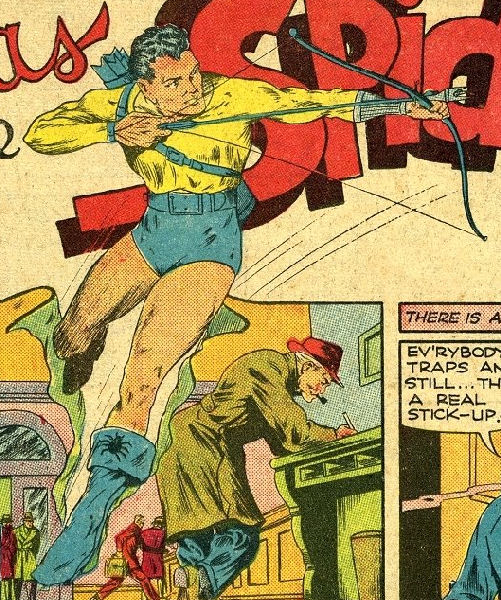 We will see old JSA villains, like Solomon Grundy and Ragdoll, some of DC's sci-fi heroes and characters, from the Silver Age. He will meet Captain Marvel and Hellboy. He will even meet Jor-El and one of Dc's earliest heroes and one who wasn't a costumed vigilante, but a rip-off of Douglas Fairbanks. We will also see guest artists step in, for the Times Past stories, where we look back at the Starman legacy and the history of Opal City and a tremendous group of artists it will be. But, first, with the next issue, we will see just how much Jack differs from other heroes, as he faces a hired killer and comes up with a rather unique solution to their conflict. then, we will see the birth of an annual tradition, that never failed to delight. |
|
|
|
Post by codystarbuck on Oct 24, 2017 22:14:48 GMT -5
Starman #4  Tony Harris has Jack looking all cool and hip, on the cover, proving that if you are going to give a superhero a leather jacket, leave the spandex at home! Our story begins with a history lesson, about a crazy artist, named Harry Ajax, who turned up in hawaii and ended up designing Hawaiian shirts. He created one that was said to be mystically endowed; and, in the present, a man named Bekker sends another, named Sands, to go find it, in Opal City.  Now that's a city worthy of superheroes! Of course, Jack Knight is there, wheeling and dealing for new stock, arguing about Pez. In the background is a poster, which is a clue to the mysterious human shape who saved him during the fight with the Mist's henchmen. Meanwhile, a young woman goes into one of the pedestrian tunnels in Opal (rather like those in London and Europe), where she comes across a wild poster and is devoured by a dragon image. A sinister bald, bearded man (looking rather like Rasputin, in Hellboy) comes along and takes the poster down and we will have to wait for another future issue to find out what happened. Eat your heart out Chris Claremont! Jack feels a chill in the air and suddenly the Shade is there. Jack calms down when the Shade says he bears him no ill will and they sit down to discuss whether Jack dreams of past lives; specifically, a 19th Century western lawman, raised by indians. Jack says no, though he does ream about being a Napoleonic spy, named Rosa. Robinson throws out some European art cinema references and the Shade leaves Jack a volume of his journals, so Jack can better know the history of Opal. He also leaves him the dedication plaque to the Adele Knight Wing of the Opal City Museum. We see more of Jack's day to day life, then he encounters Mr Sands, in his own place, looking like something out of Andy Warhol, with mirrored flip up round sunglasses (with geometric shapes), painted ties, and a colorful hipster suit. Sands wants the mystical Hawaiian shirt that his boss believes is a gateway to heaven. Jack doesn't want a mystical shirt, but isn't going to let Sands rob him. Sands then offers to buy the shirt, as the weirdest Mexican standoff is diffused and Sands buys the shirt. Later, we learn that Bekker got the shirt and disappeared into thin air. We end with Jack relating his recent experiences to Ted, who tells him the weirdness will find him, which thrills Jack to no end. Nice little calm moment, before we move on to the next storyline. Robinson and Harris take us on a small tour of Opal, name dropping neighborhoods and past history. Opal is a mish-mash of European touches, New York, San Francisco, and other cities with their own character. We also get a bit of collector mania, another staple of this. it's part of why this series epitomizes the 90s, as collector frenzy was feverish, in comics, and in other areas, as we see trading cards go ape (then the bottom falls out) and end the decade with Beany Babies (before the market drops out). Robinson was a collector, just like his readers and it infuses the series, with references to posters, comics, bakelite goods, old tvs, transistor radios, cameras, Viewmaster reels, Depression-era glassware, etc, etc... This is mostly a character piece, giving us further looks at Jack, without lots of fighting. Sack still denies that he is a hero, as the Shade suggests otherwise. The Shade drops hints about Times Past and he seems obsessed with the idea of a reincarnated 91th Century western lawman, raised by indians. It isn't Jack, though. He also teases us with a demonic poster, which Harris gives the proper horror movie feel. That story will wait a bit. Up next, the birth of an annual tradition and a bit of closure. Stay tuned. |
|
|
|
Post by EdoBosnar on Oct 25, 2017 3:16:18 GMT -5
Maybe one day I'll get around to reading Starman, I've heard so many good things about it and your reviews are sharpening my interest. However, I'm commenting just to say I got a pleasant shot of nostalgia when I saw the image of *my* Starman (Prince Gavyn). I loved that feature in Adventure - and don't like that the poor guy was killed off in Crisis.
|
|
|
|
Post by codystarbuck on Oct 25, 2017 11:05:38 GMT -5
Maybe one day I'll get around to reading Starman, I've heard so many good things about it and your reviews are sharpening my interest. However, I'm commenting just to say I got a pleasant shot of nostalgia when I saw the image of *my* Starman (Prince Gavyn). I loved that feature in Adventure - and don't like that the poor guy was killed off in Crisis. Prince Gavyn and Will Payton get their day, when Robinson and Peter Snejbjerg do "To the Stars." We will also get to see Adam Strange, Jor-El and even Space Cabbie! Mikaal Tomas gets lovin' firtst, though, in stories that will begin soon. One of the great things here is that Robinson and his collaborators have a real love for some of the obscure and forgotten characters of the DCU. Who else wanted to use Alias the Spider or the Jester? Robinson latched onto characters who appeared once, in First Issue Special or elsewhere and made them interesting, without leaving behind that one appearance. He made a coherent saga out of Ted Knight, the 1951 Starman, Mikaal Tomas, Prince Gavyn, Will Payton, David Knight and Jack and made Star Boy and Courtney Whitmore far more interesting than her own series did (my opinion, anyway). Starman is a book that locks onto the generational aspect of DC Comics, which is one of its strengths and one area it has all over Marvel. |
|
|
|
Post by mikelmidnight on Oct 25, 2017 13:21:27 GMT -5
|
|